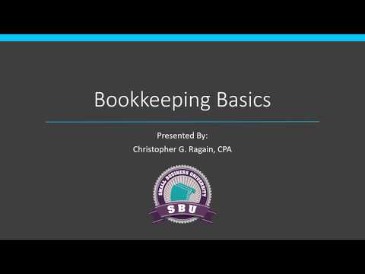eCFR :: 2 CFR Part 200 Subpart E Cost Principles
Content

However, if an agreement reached under paragraph of this section has explicitly considered this 80 percent limitation and permitted a higher percentage, then the full amount of costs resulting from that agreement are allowable. The non-Federal entity’s system of internal controls includes processes to review after-the-fact interim charges made to a Federal award based on budget estimates. All necessary adjustment must be made such that the final amount charged to the Federal award is accurate, allowable, and properly allocated.
- Selling expenses are dependent on the number of goods sold, i.e., selling expenses may be directly proportional to the number of goods sold by an organization.
- Because it is indirectly related to the production and delivery of goods and services, it is classified as an indirect cost.
- This would be accounted for as a finance cost in the other expenses section.
- However, if royalties are based on units sold, the cost is treated as a selling overhead.
This policy, if not published in a request for proposal or sponsor guidelines, must be on the sponsor’s letterhead and signed by the sponsor’s authorized official. When SG&A expenses are “ordinary” and “necessary” to your type of business, the IRS typically allows you to deduct them for the tax year in which they were incurred. Administrative overhead is considered a period cost; that is, the benefit of this type of cost does not carry forward into future periods. The screenshot above is taken from CFI’s financial modeling courses, which cover forecasting SG&A expenses.
Tips for managing general and administrative expenses
Some level of administrative expenses will always be incurred as a necessary part of operations. From the above lists, it is clear that selling overheads are related to the promotion of sales, whereas distribution overheads start when the order is received to supply the materials and end when the goods are dispatched to the customer. The classification, codification, and collection of selling and distribution overheads are done in a manner similar to the approach adopted for factory overheads.
Other organizations, as approved by the cognizant agency for indirect costs, may be added from time to time. Part of the University’s agreement with the federal government regarding F&A is that the University will not offer a lower F&A rate to other kinds of sponsors. That means that the University has to use the same rates for commercial sponsors as it does for the federal government.
Resources for F&A Costs
An insurer or trustee to maintain a trust fund or reserve for the sole purpose of providing post-retirement benefits to retirees and other beneficiaries. The Federal Government must receive an equitable share of any previously allowed pension costs which revert or inure to the non-Federal entity in the form of a refund, withdrawal, or other credit. The non-Federal entity establishes consistent written policies which apply uniformly to all faculty members, not just those working on Federal awards. Is determined and supported as provided in paragraph of this section, when applicable.

Although there are cases when the two physical buildings may overlap, it is the usage of the overheads that separates them. In the U.S. the average overhead rate is 52%, which is spent on building operation, administrative salaries and other areas not directly tied to research. An article written by Joshua Pearce in Science argued that overhead accounting practices hurt science by removing funds from research and discouraging the use of less-expensive open source hardware. He went into detail on the accounting showing how millions were wasted each year on overhead cash grabs by university administrators in ZME Science. Overheads are often related to accounting concepts such as fixed costs and indirect costs. To accurately project future SG&A costs, some companies attempt to forecast each individual component.
What Is Selling, General & Administrative Expense (SG&A)?
Selling, General & Administrative expenses (SG&A) include all everyday operating expenses of running a business that are not included in the production of goods or delivery of services. Selling, General & Administrative (SG&A) expenses are the administration cost example costs a company incurs to promote, sell and deliver its products and services, as well as to manage day-to-day operations. Understanding and controlling SG&A can help companies manage their overhead, reduce costs and sustain profitability.
Administrative Expenses can be said as the cost incurred by a business organization that is not directly related to manufacturing, production, or sale of goods or services provided but are indirect costs necessary for administering business to ensure the smooth running of business operations. E.g., the cost of information technology, Finance & Accounts, Human resources division, etc. It is important to research overhead for budgeting and determine how much the business should charge for a service or product to make a profit.
Costs of bonding required pursuant to the terms and conditions of the Federal award are allowable. Any costs of auditing a non-Federal entity that is exempted from having an audit conducted under the Single Audit Act and subpart F of this part because its expenditures under Federal awards are less than $750,000 during the non-Federal entity’s fiscal year. Whether the non-Federal entity significantly deviates from its established practices and policies regarding the incurrence of costs, which may unjustifiably increase the Federal award’s cost. Whether the cost is of a type generally recognized as ordinary and necessary for the operation of the non-Federal entity or the proper and efficient performance of the Federal award. Be consistent with policies and procedures that apply uniformly to both federally-financed and other activities of the non-Federal entity. The non-Federal entity is responsible for the efficient and effective administration of the Federal award through the application of sound management practices.
What are examples of administrative costs?
- Rent.
- Utilities.
- Insurance.
- Executives wages and benefits.
- The depreciation on office fixtures and equipment.
- Legal counsel and accounting staff salaries.
- Office supplies.
